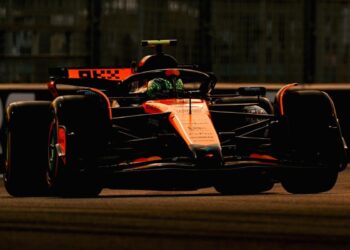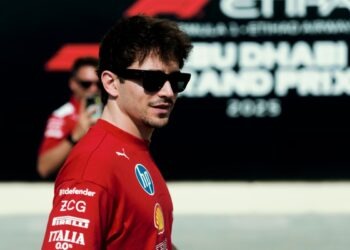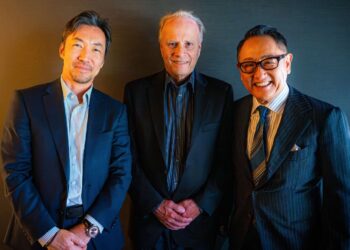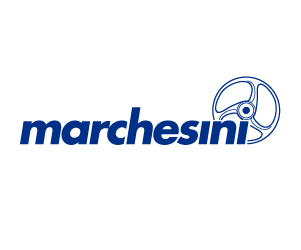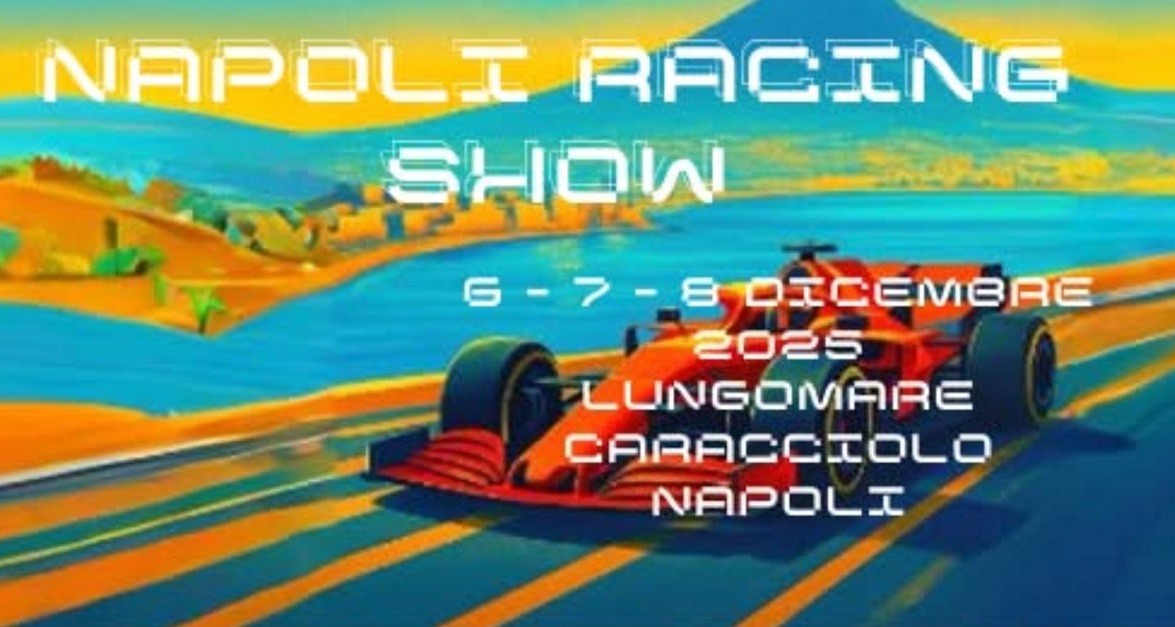“Migliorare la sicurezza dell’iconica ‘Eau Rouge’ mantenendo il suo carattere unico è stato una vera sfida”. Questo è molto altro nell’intervista a Jarno Zaffelli, fondatore di Dromo Circuit Design, sui lavori effettuati sullo storico circuito belga. Nel 1993 Ayrton Senna disse di Spa-Francorchamps e del complesso dell’Eau Rouge: “Se eliminate l’Eau Rouge, mi togliete il motivo per correre”.
This corner is the highest ranked corner for the unpredictability, thrill and unique layout. For some, ‘Eau Rouge’ is the most iconic corner on the whole F1 calendar. Any redesign, modifications on such a legendary track section, needs to be done with the utmost respect and attention to every details. The real challenge is to maintain the original feel of the corner, and the track, whilst adding safety and improvements. We talked with Jarno Zaffelli founder of Dromo Circuit Design, about the project and the redesign undertaken at the historic Spa-Francorchamps.
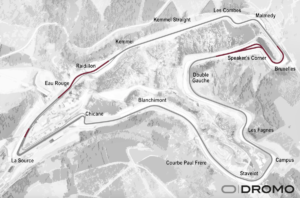 “Around Eau Rouge, safety enhancement measures were put in place, which have shown visible changes to the area around the uphill right hander. Last winter Dromo was asked to resurface the T2-T3-T4 Eau Rouge section, also Bruxelles (T8) and Speaker Corner (T9) corners were under their responsibility. We were engaged after the floods that did a lot of damage and the target was to improve the security of Eau Rouge“.
“Around Eau Rouge, safety enhancement measures were put in place, which have shown visible changes to the area around the uphill right hander. Last winter Dromo was asked to resurface the T2-T3-T4 Eau Rouge section, also Bruxelles (T8) and Speaker Corner (T9) corners were under their responsibility. We were engaged after the floods that did a lot of damage and the target was to improve the security of Eau Rouge“.
What was the brief you received?
“The target was to modernize and improve the safety of the Eau Rouge. We were engaged after the floods that did a lot of damage. We determined how to restore the area and improve the racing show, reducing the bumps, allowing for rainfall disbursement and overall safer. This whilst ensuring the most iconic corner in motorsport retained its unique character”.
How is it to work on a project like this one?
“It is an adrenaline rush. We had the honour to support the Spa-Francorchamps team, and the new CEO. It was a great satisfaction to have their trust to do the design. We had the complexity of all the stakeholders including FOM, FIA, FIM, etc. Then the supply chain side, including the equipment suppliers and our partners like Hart Consulting, and specialists like Topcon Europe”.
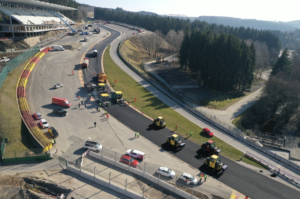 When did you do the work?
When did you do the work?
“The pressure really came from the weather conditions in this region. The only available window was between February & March 2022. In winter in fact is too cold and this area is famous for the heavy rain. Just to give you an idea of the tight calendar, think that racing took place just 10 days after the re-pavement was completed”.
What was the main challenge in realizing the project?
“In the design and the further developments we took into consideration the new regulations and the new tyres. We had like 20+ iterations of ‘Eau Rouge’. We spent several days with professional drivers in our in-house simulators to get their feedback. We spent then two full days with professional drivers in Vi-Grade sim center, supervised by Thierry Boutsen and Emanuele Pirro; between October and November 2021 the work was fined tuned in the simulators for F1 and GT cars with Marco Bonanomi, to get their feedback. This work helped us a lot to choose the final design that was then submitted to the FIA Circuit Commission prior to the works that were carried out in the first months of the 2022 season. In addition, we had our internal analysis of the circuit, a LIDAR scan of the area, and then a complete analysis to finalize all the details”.
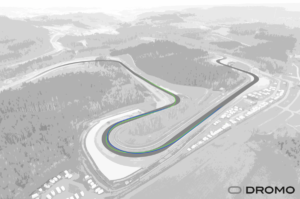 Developing asphalt mixes, manufacturing asphalt and paving for motorsport circuits is an art.
Developing asphalt mixes, manufacturing asphalt and paving for motorsport circuits is an art.
“It’s an alchemy and a science at the same time. The Dromo inhouse software, WhatsON™, was the starting point for the definition and the further development of the asphalt mix. It enabled us to understand things from an engineering perspective in conjunction with core samples etc. Our asphalt experts joint to Hart Consulting’s ones, have paved more than 100 circuits around the world so far. Regarding the Eau-Rouge, the task was too important, so we worked together to do Spa-Francorchamps, creating a unique mix called LeNoir™”.
Why didn’t you use the previous asphalt used at Spa?
“Last time that the track was paved was almost 20 years ago. At that time the performance of the race vehicles and motorbikes have hugely increased. The technology available for the asphalt materials and the paving equipment have changed dramatically. Dromo’s experience and expertise is actually the development of the mix design specific for each circuit. To reach the best performance, Dromo’s formula of the best mix is supported by Hart’s experience in the asphalt production”.
Which were the main challenges in the resurfacing?
“The key challenge was the 31m track slope from the bottom of ‘Eau Rouge’ to the top. This is a technical challenge, complicated by the time of year we had to pave in and the low temperatures”.
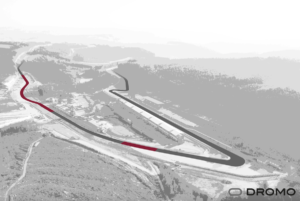 What was the feedback of teams, drivers at the 24 Hours of Spa?
What was the feedback of teams, drivers at the 24 Hours of Spa?
“During the WEC 6Hrs race we got very positive feedback from teams, race engineers, the tire companies and the drivers. The most interesting fact for us was the no crashes happened in the full race weekend in ‘Eau Rouge – Raidillon’, after we had designed and paved”.
How will the new generation of F1 cars respond?
“It will be a flat out corner and it will provide opportunities. The cars will feel the difference between the new asphalt and the old one. If we look at the GT cars during the 24Hrs of Spa, the pole was 1.7s faster than the previous year. We know that this year the F1 cars are generally slower than 2021, so here there won’t to be a big gap”.



